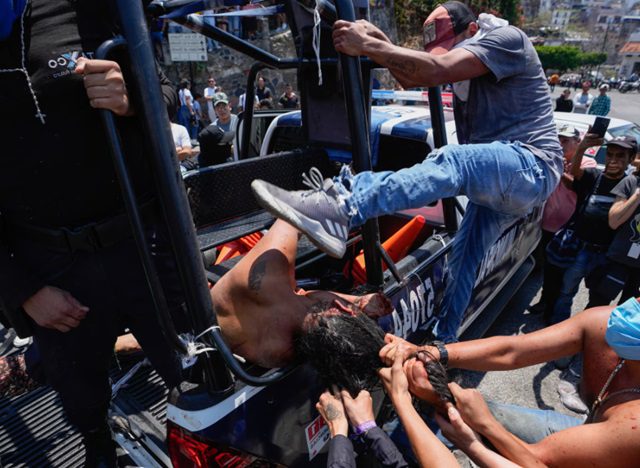Barranquilla, Colombia – In the quiet streets of the Las Américas neighborhood, a cry broke through the night—loud, sharp, unstoppable. On September 21st, a man named Yesid Manuel Acosta Pedraza, at just 41, breathed his last amid the chaos of gunfire. His life was snuffed out by two masked figures who stormed the evening on a motorcycle, their hearts dark with intent, their hands ready with steel. No words, no warning, just the crack of bullets that shattered the stillness, leaving a man’s dreams scattered across the pavement.
In the wake of that violence, the community, usually so quiet, so unassuming, found a voice—a fierce, protective roar. The men who took Yesid’s life thought they would escape into the shadows from which they came. But their escape was short-lived. Fate tripped them just meters away. Their motorcycle fell. And with it, any hope of fleeing.
When a Community Refuses to Be Silent
They heard the shots, the neighbors did. And something in them, something primal, refused to stay still. The streets of Las Américas, usually a place of routine and everyday life, became a ground where fear turned to rage, and grief found its expression in action. Armed with little more than sticks, bottles, and the anger of loss, the people of Barranquilla rose.
The two sicarios, now exposed and desperate, had nowhere left to hide. One man, still unidentified, would not see another dawn. The people’s justice came swift and brutal, a furious rejection of the violence that had just stained their streets. The second, Carlos Andrés Guerrero Valera, a 25-year-old with a history marked by theft and deceit, survived the storm, but only just.
In a World Where Justice Is Slow, People Take Their Own
It was Guerrero who was left behind, barely alive, and now clinging to the edge of this world. His name was already known to the police, two strikes against his record, whispers of thievery and lies trailing him like a shadow. But on this night, it was not his past that nearly took him—it was the present, the weight of a community’s grief too much for his young shoulders to bear.
The other man, the one whose name the authorities still search for, found no mercy under the angry hands of the people. His life ended much like the one he had come to take, but not at the barrel of a gun—rather, at the hands of those who had lost enough.
The Silence After the Storm: Seeking Answers Amid the Tragedy
The authorities arrived after the storm had passed, after the bodies lay still and the anger had ebbed into exhaustion. Two dead, one gravely wounded, and a community left to reckon with the pieces. The police will investigate—Yesid Acosta’s murder, the mob’s response—but as they comb through the wreckage, the streets of Las Américas are already changed.
In the hearts of those who live there, this night will echo. For this was not just about two men on a motorcycle. It was about something far deeper. A community defending itself when no one else could. A refusal to be passive in the face of terror.
The investigation will unfold. The truth, we hope, will emerge. But for now, Barranquilla mourns Yesid Acosta Pedraza, a man taken too soon, and wonders—what happens next when the lines between justice and revenge blur?
Barranquilla’s Heartbreak and Strength
In a city that has seen too much of this—too much blood, too many names carved into tombstones before their time—the people of Barranquilla stand at a crossroads. What does it mean when the streets, once places of safety, become battlegrounds where justice is no longer trusted to the courts, but taken into the hands of the people?
Perhaps it was inevitable. When grief meets rage, and fear meets courage, something must give. On that September night, it was the thin veil of safety that tore apart. Yesid Manuel Acosta Pedraza’s name will be remembered, not just as another casualty, but as a turning point—a moment when a community, for better or for worse, decided to take its fate into its own hands.


